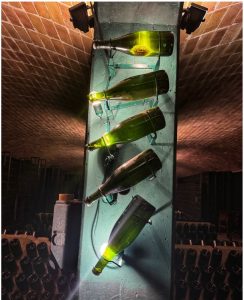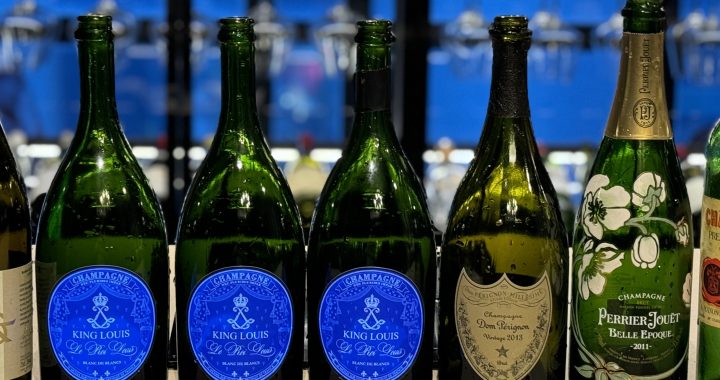Introduction
- Champagne can ONLY be called Champagne if made in the Champagne region in France; with quite strict rules in its making
- Other “Sparkling Wines” in France are called Crémant Sparkling Wine
- There are numerous ways in creating the “bubbles” in Sparkling Wines; each with pros and cons (usually related to cost)
- Traditional Method – Most expensive and time consuming
- Transfer Method – Variation on Traditional Method, cheaper
- Tank Method – Fresh fruity, used by Prosecco
- Asti Method – Single fermentation, Asti region in Piemonte
- Carbonate Method – Cheap, using CO2 injection
- Ancestral Method – Old method, but coming back
- All Champagne is made using Traditional Method; some regions such as Cava, Spain also mandate the use of Traditional Method
- Other regions of the world do not have strict rules and the wine maker will label “Traditional Method” on their Sparkling Wine to indicate the use of Traditional Method
Traditional Method
The traditional method for making Sparkling wines is very labour and time intensive, the following are the steps involved in making a sparkling wine using the traditional method
- Base Wine – Same as making still dry wine
- Blending – Same as making still dry wine
- Second Fermentation – In bottle, by adding yeast into the bottle to create the bubbles
- Yeast Autolysis – After 2nd Fermentation, the dead yeast provides additional complex flavours by the chemical reaction
- Riddling – Moving the dead yeast to the neck of the bottle
- Disgorgement and Corking – Removing the dead yeast and adding Liqueur d'expédition (dosage: brut, brut nature – final sweetness of the wine)
- Bottle Aging - Allow the Liqueur d'expédition to integrate with the wine
Riddling
The final  product of a sparkling wine in general is clear, however during the second fermentation there is the reminiscent of the sediment from the dead yeast that is still in the bottle. Since the bottle during second fermentation is stored on it’s side, these sediment particles would have fallen due to gravity and collected the “side” of the bottle closest to the ground.
product of a sparkling wine in general is clear, however during the second fermentation there is the reminiscent of the sediment from the dead yeast that is still in the bottle. Since the bottle during second fermentation is stored on it’s side, these sediment particles would have fallen due to gravity and collected the “side” of the bottle closest to the ground.
The process of riddling is to very slowly orient the bottle from the horizontal position to an inverted vertical position where the top (opening) of the bottle is facing down. This process involves slowly performing a 1/4 turn rotation of the bottle on its axis in parallel with moving from a horizontal to a more vertical angle with each rotation. With each rotation and subsequent steep angle orientation of the bottle, the sediment moves to the top of the bottle (since it is been inverted).
This slow rotation, of the bottle will ensure that the sediment particles will not “float” all around the liquid in the bottle (as any sudden movement the sediment particles will float all around the bottle and settle throughout the bottle such as on the side and neck of the bottle), and concentrate all the sediment particles together till they all settle at the top of the bottle (which is the opening of the bottle).
The riddling process is completed when the bottle is fully in an inverted vertical orientation with the top of the bottle pointing down and with all the sediment particles collected at the top of the bottle. Traditionally this process was performed by hand, with someone carefully turning each bottle twice a day, taking up-to a month or more to complete the process. Now with automation, a machine called a gyropalatte can perform the same task in hours.
Disgorgement
After the riddling process, which was to collect all the sediment from the dead yeast during the second fermentation at the top of the bottle (at the opening); the next step is the Disgorgement which is a technique to remove all the sediment from the dead yeast out of the bottle.
The disgorgement process is now automated, with a machine that freezes the liquid at the top of the bottle (which is oriented in an inverted vertical position) that freezes both some of the liquid and all the sediment. The bottle is then rotated to an upright position and due to the pressure inside the bottle from the second fermentation a slight nudge will eject the frozen liquid with the sediment out of the bottle. This process takes a matter of seconds by machine, however before automation this disgorgement was performed manually by hand; where in some places such as Penedès, home of Spanish sparkling wine Cava is still using manual disgorgement for their premium wines.
Liqueur d'expédition
After the disgorgement, not only the sediment from the dead yeast is ejected from the bottle but some liquid will as well. A mixture of wine (usually the same base wine as the sparkling wine, but not always as other liquids can be used) and sugar is added back into the bottle before corking to refill the bottle, this mixture is called Liqueur d'expédition.
This Liqueur d'expédition is also known as dosage, as the mixture (sugar level) added will determine the final sweetness level of the sparkling wine. In Champagne, the following are the dosage levels and are shown prominently on the label such that the consumer will know the sweetness level of the Champagne; from driest to sweetest, the dosage categories are the following (with the sugar in grams per litre)
- Brut Nature (0-3 g/l) - Usually there is no residual sugar, but by law there can be some
- Extra Brut (0-6 g/l)
- Brut (0-12 g/l)
- Extra Dry (12-17 g/l)
- Dry (17-32 g/l) - Dry in still wines denotes no residual sugar, but for sparkling there is sweetness
- Demi-Sec (32-50 g/l)
- Doux (50+ g/l)
